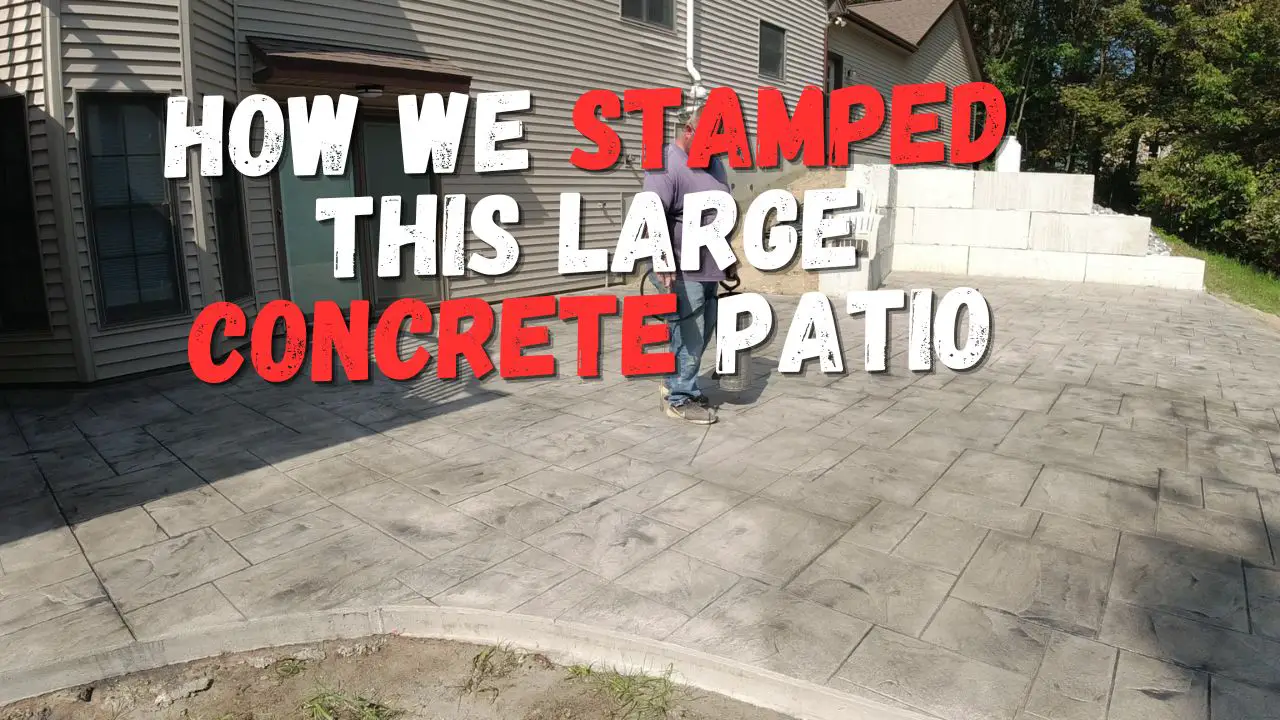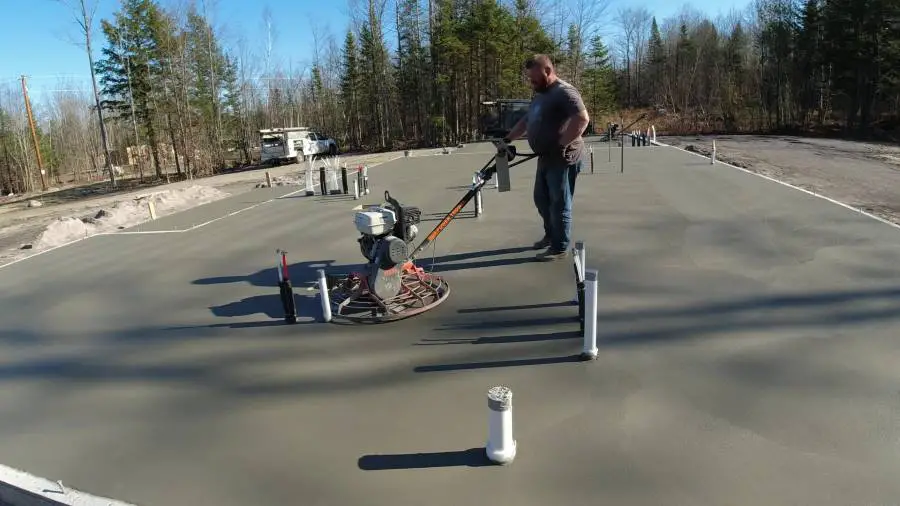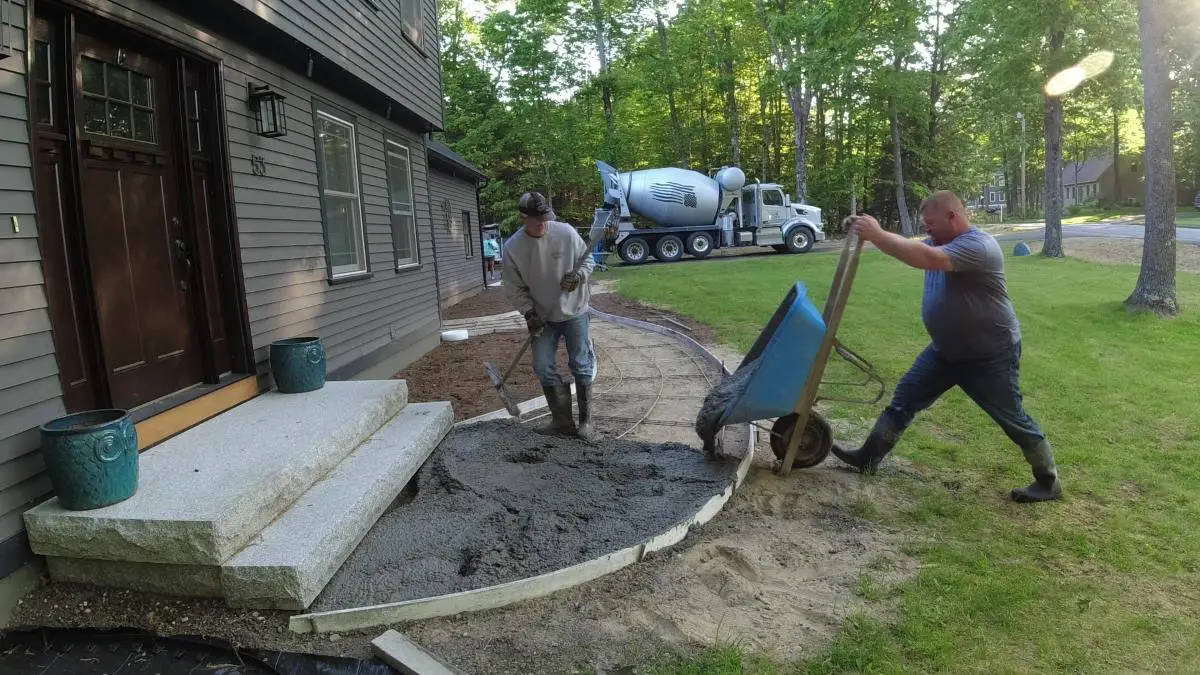how to pour a garage floor in 17 minutes
The process I use for pouring a concrete floor for a garage is:
- Order the concrete from a ready mix concrete company
- Establish concrete floor grade using a laser level
- Mark grade level on the walls and snap chalk lines for perimeter grades
- When concrete truck shows up, mix the concrete to a workable slump
- Start pouring out the concrete as close to your grade lines as possible (pour a section at a time)
- Use laser level to set concrete floor grade in the middle of the garage (a wet pad)
- Mag float the concrete, matching your chalk lines around the perimeter
- Start leveling the concrete with a screed using your mag floated pads
- After screeding level, use the bull float to smooth the surface
- Repeat for each section until you're done pouring the garage floor
The time it takes you to pour your garage floor will vary depending on your experience level and how big or small your garage floor is.
watch us pour this garage floor in 17 minutes
The size of the garage floor we're pouring in the video is 24' x 24'. I was hired to just pour and finish the floor.
I wasn't hired to prep the gravel or install poly vapor barrier or install reinforcement. That stuff was the responsibility of the General Contractor.
We used 4000 psi concrete with fiber mesh (reinforcement) and the concrete had a water reducer in it. The water reducer is a chemical they add to the concrete that allows you to pour a looser mix without adding water.
How thick does a garage floor need to be?
That depends on what you're using the garage for. Most residential garage floors like this one are 4" thick.
As long as the sub-base has very good compaction, a 4" thick floor is good enough for most cars and light duty trucks.
For heavier vehicles, a 6" thick garage floor would be better for supporting bigger trucks and commercial vehicles.
how do you prepare the ground for a concrete floor in a garage?
The best way to prepare the sub-base for a garage floor is to use gravel. Remove any sod, loom, clay, or dirt that's not gravel.
Install 2" minus gravel for the lower sub-grade and compact it in 8" lifts. Once you get to within 6" of the final sub-base grade, switch to a 3/4" crushed gravel for the remaining 6".
This smaller aggregate gravel is easy to rake and level off. Using a laser level to check your grade, rake, compact and level the gravel to your final grade.
How deep you have to go with the gravel will depend on where you live, your existing soil conditions, and your existing landscape.
If you live in an area with a lot of freeze/thaw conditions, you'll use a deeper gravel base than if you live in the South USA. Check with your local code enforcement to see what works best in your area.
can you pour a garage floor in sections
Yes, you can pour a garage floor in sections. If you feel you can't pour all the garage floor at one time then form it off in smaller sections.
Use 2x4's or 2x6's to form one section at a time and just pour that first. Strip the forms the next day and form up the next section.
I would drill holes into the previous section with a 1/2" masonry bit and pin the sections together. Drill into the concrete about 3" and about every 2' on center. Use 1/2" dowels or rebar about 12" long for your pins.
Hammer them in just before you pour the new section. These pins will keep one section from moving higher or lower than the other one. They'll help keep the joints nice and tight together as the concrete cures.
IN CONCLUSION:
You may not be able to pour your garage floor in 17 minutes, that's really not important. The method we pour our garage floors will help give you an idea how to pour yours a little faster though.
To learn more about how to pour and finish concrete like we do, check out The Concrete Underground.
That's my private training academy for helping teach people like you how to work with concrete.














